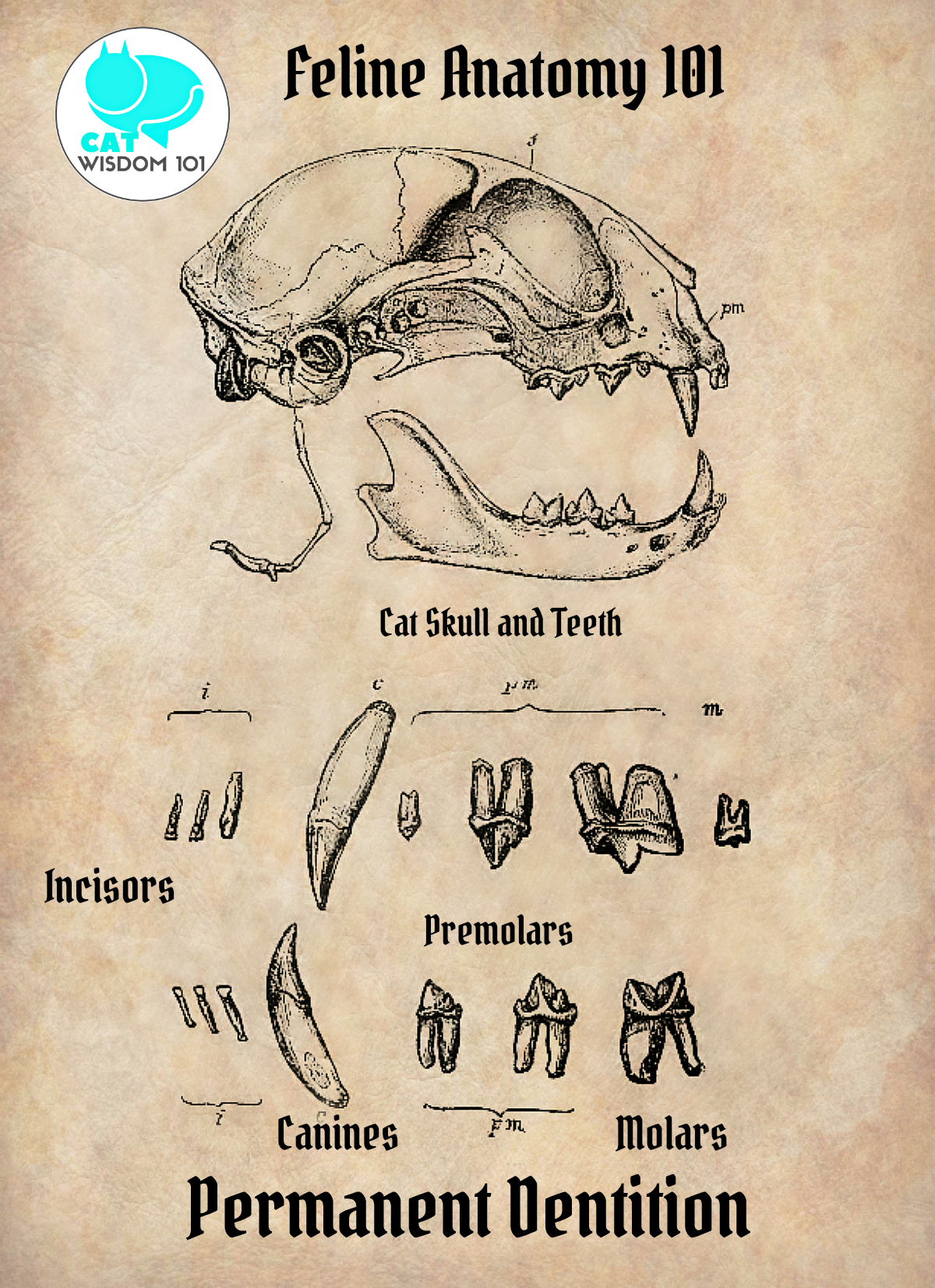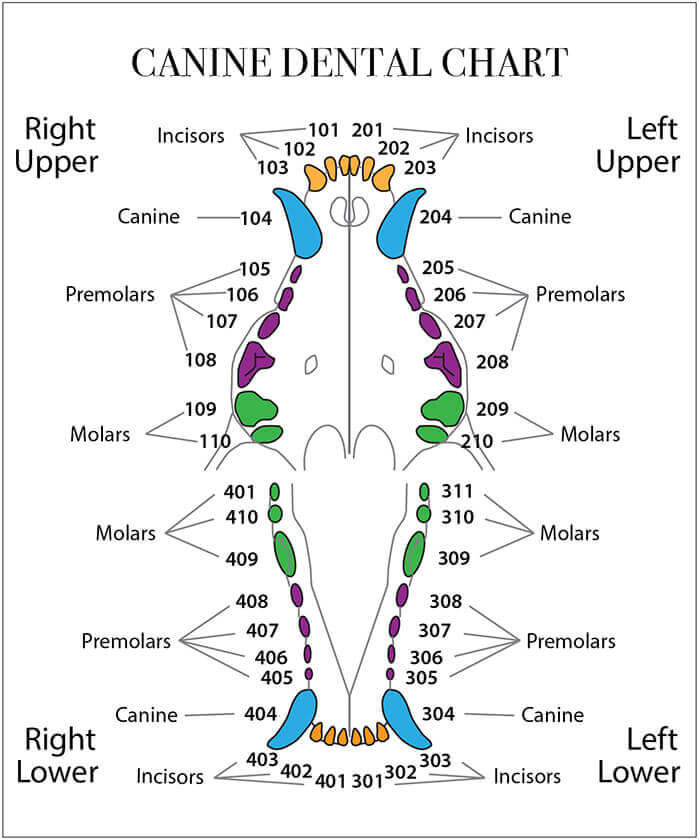
Dogs are infected when larvae are ingested or penetrate the skin.įollowing ingestion, in pups less than 6 months of age, most larvae follow a mucosal migration. The larva then hatches and develops to the infective third stage - within a 5-8 days under ideal conditions (temperatures greater than 15 C). In the environment, a first-stage larva develops within each egg. This parasite is increasingly showing multidrug resistance in the United States, less so in Canada where it is still relatively rare.Īdult A. Rarely these larvae complete their development to adults in the human intestine, where they can cause a clinically significant eosinophilic enteritis.
#Cat teeth diagram skin
caninum sometimes invade the skin of people, resulting in cutaneous larva migrans. caninum is rare in Canada, and is seen most often in dogs imported from regions where the parasite is endemic or that are from kennels with sub-optimal management. Ancylostoma caninum thrives in regions where the environment is warm and humid, and where dogs are crowded and perhaps stressed. In general, in dogs of all ages, pathogenicity is related to parasite burdens. In young pups, the parasite can cause severe disease and death even before patent infections are detected, primarily as a result of the blood sucking activities of the pre-adults and adults in the small intestines. Milk from the mother is an important source of infective larvae for suckling pups (trans-mammary transmission). Third-stage larvae are infective and can gain access to dogs by ingestion or skin penetration.


The life cycle of the nematode is direct, although paratenic hosts may be involved. caninum live in the small intestine of their canine hosts.

Ancylostoma caninum is a pathogenic hookworm of domestic dogs and free-ranging canids, so called because its buccal capsule is bent dorsally in the form of a "hook."


 0 kommentar(er)
0 kommentar(er)
